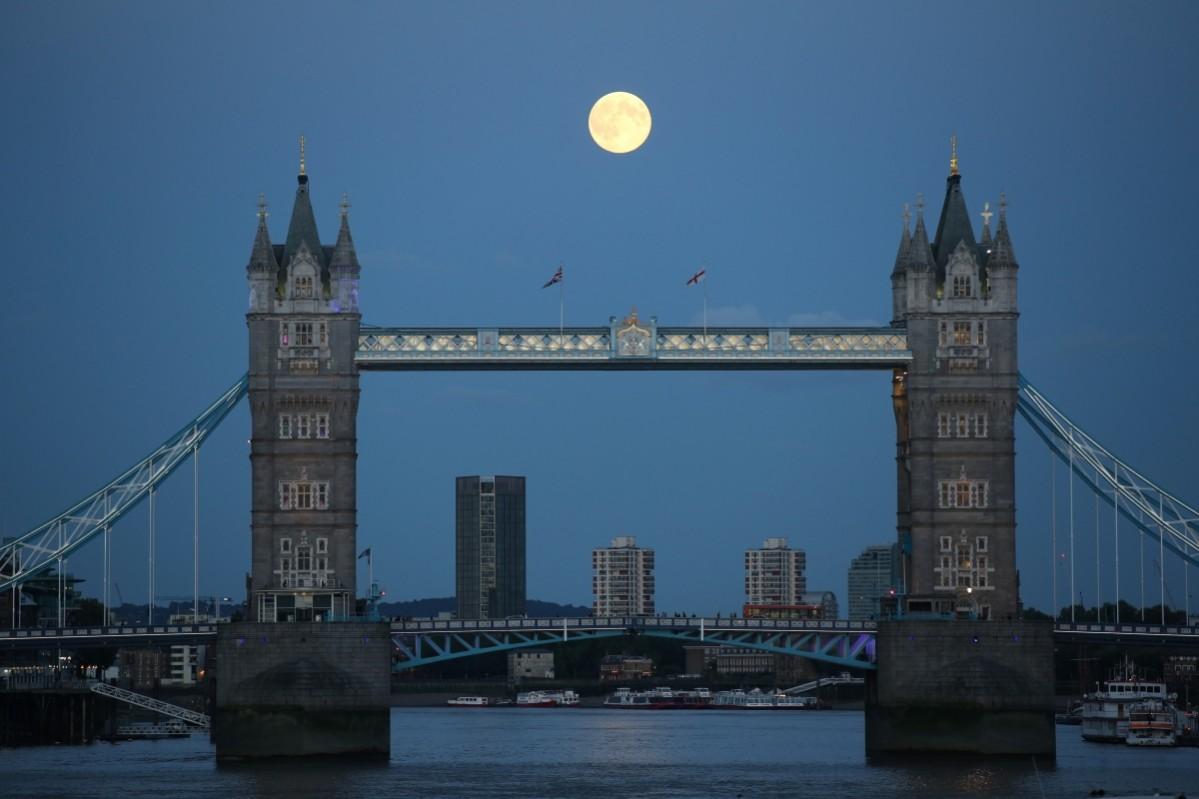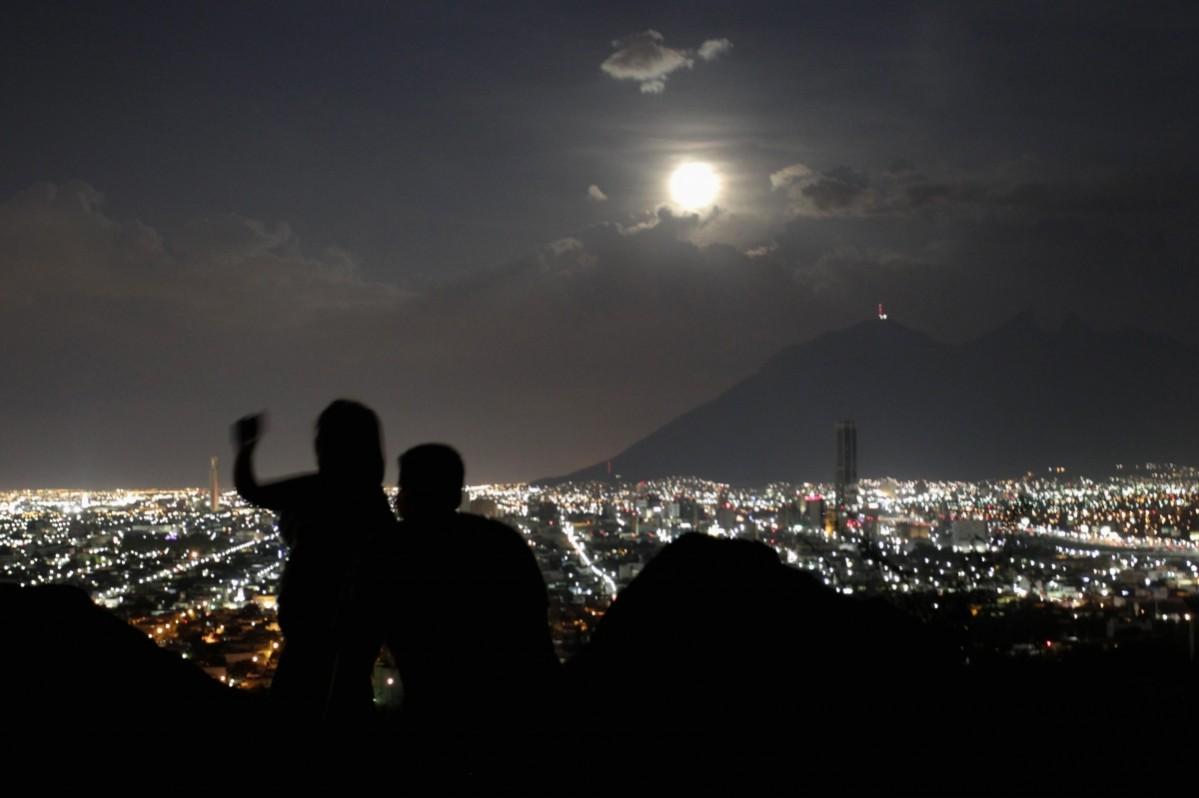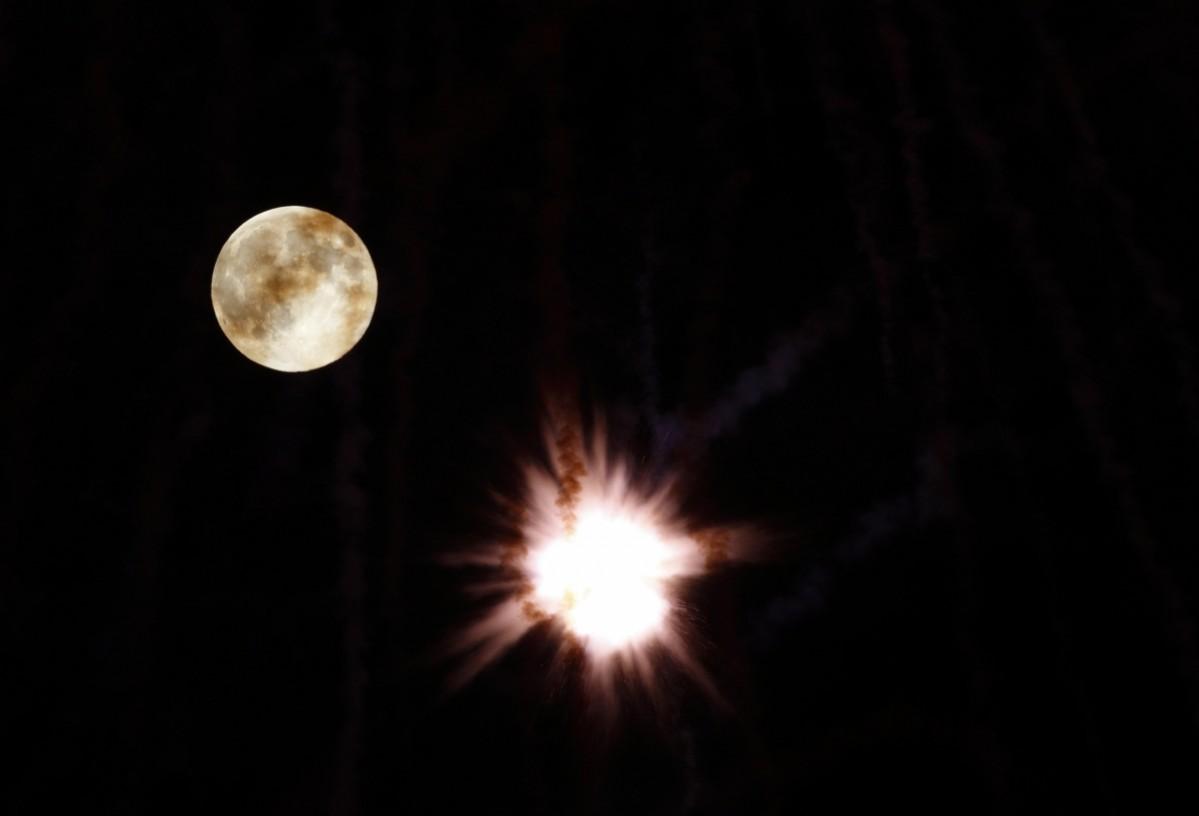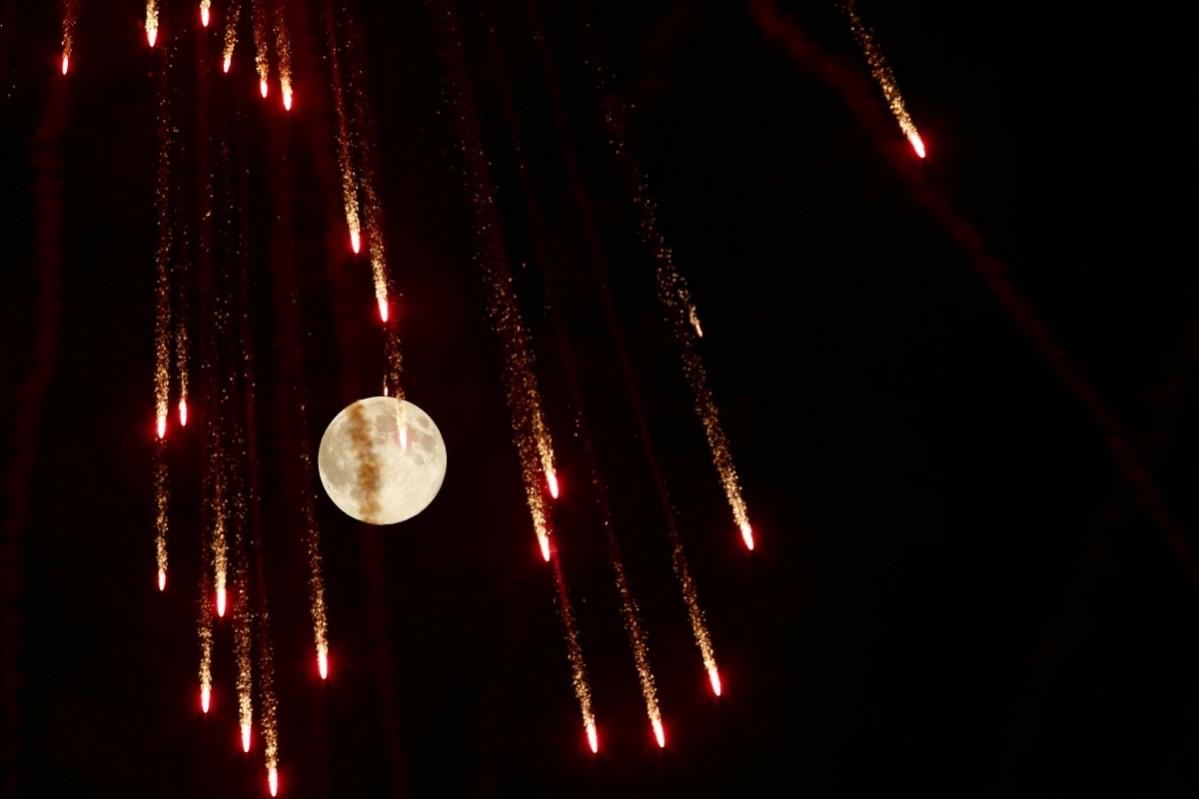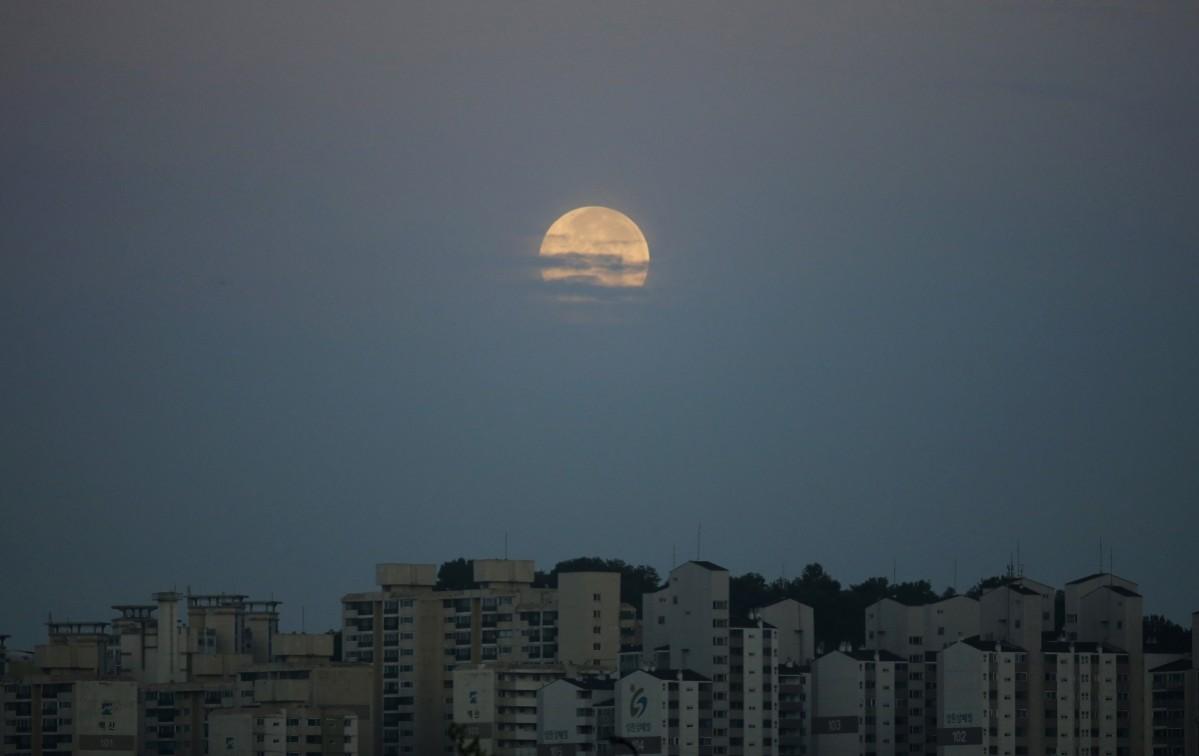An unusually big Supermoon lit the skies on Sunday, thereby offering a visual treat to the sky gazers across the globe.
Supermoon is a phenomenon when the moon is closer to the Earth's orbit than usual. The Supermoon on Sunday was the second in a series of three consecutive supermoons of the summer of 2014. On 12 July, the first summer Supermoon occurred, while the third supermoon is expected to brighten the skies on 9 September.
Supermoon is also called 'perigee moon', which means 'near Earth'. As the moon orbits the Earth, at some point of time every month, it comes closest to the planet, which is termed 'perigee.' When it is farthest each month, it is called 'apogee'.
On 10 August, the moon appeared 14 percent bigger and 30 percent brighter than normal as it reached the point in its orbit closest to the Earth. It was the biggest Supermoon of the year, as the moon was just 356,896 kilometers or 221,765 miles away from our planet.
Every month, on the day of the new moon, the Earth, the moon and the Sun are aligned in a straight line, with the moon in between. The linear arrangement leads to wide-ranging tides in different parts of the world.
Sunday's supermoon precedes the Perseid meteor shower that occurs annually starting from mid-July to mid-August. It is one of the biggest and the best meteor showers each year. This year, these shooting stars are expected to peak on 12 and 13 August but may be hindered by the bright Supermoon.
Check out some photographs of the Supermoon, viewed from different parts of the world.



